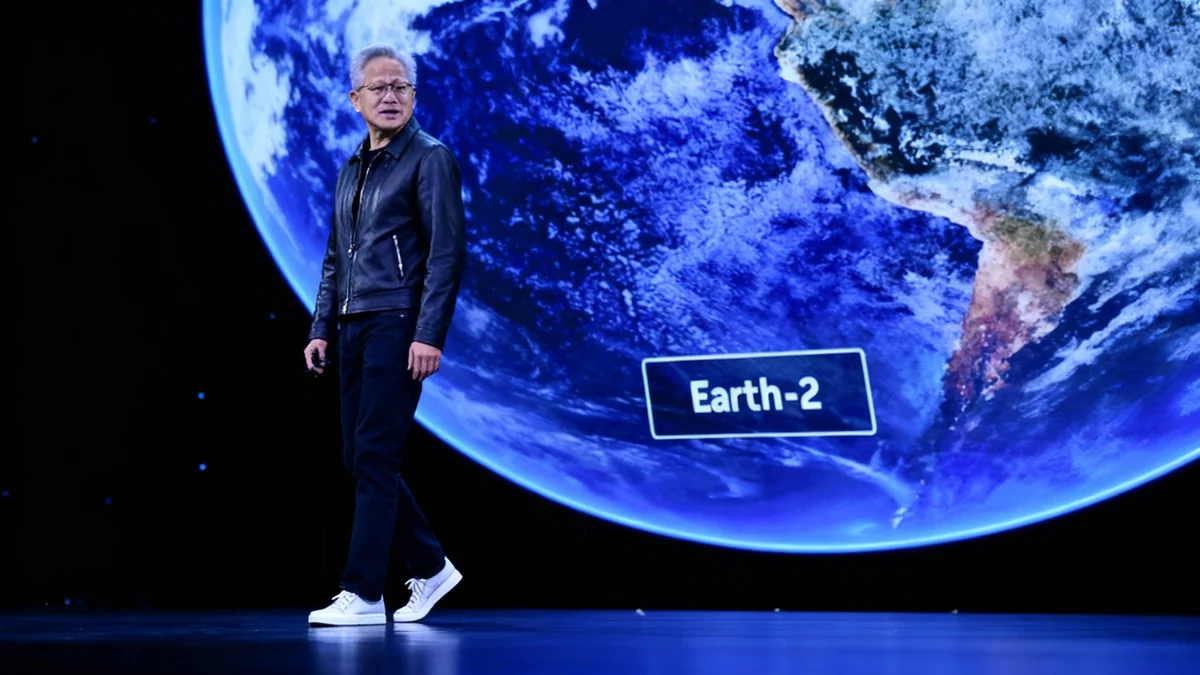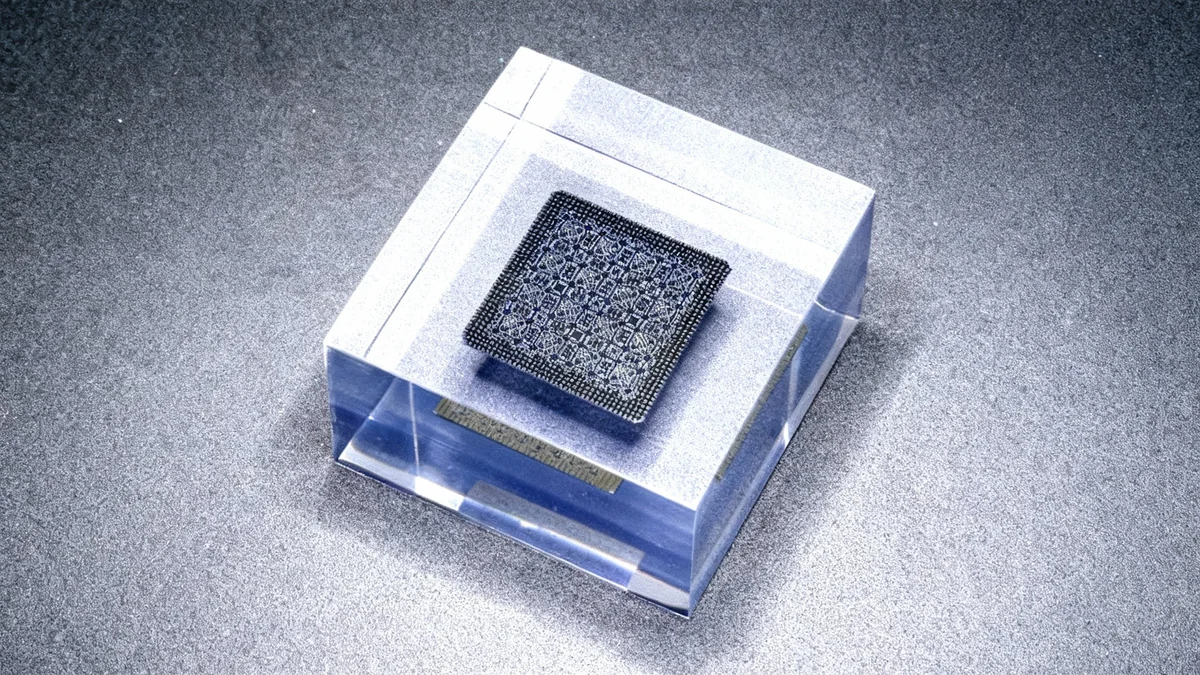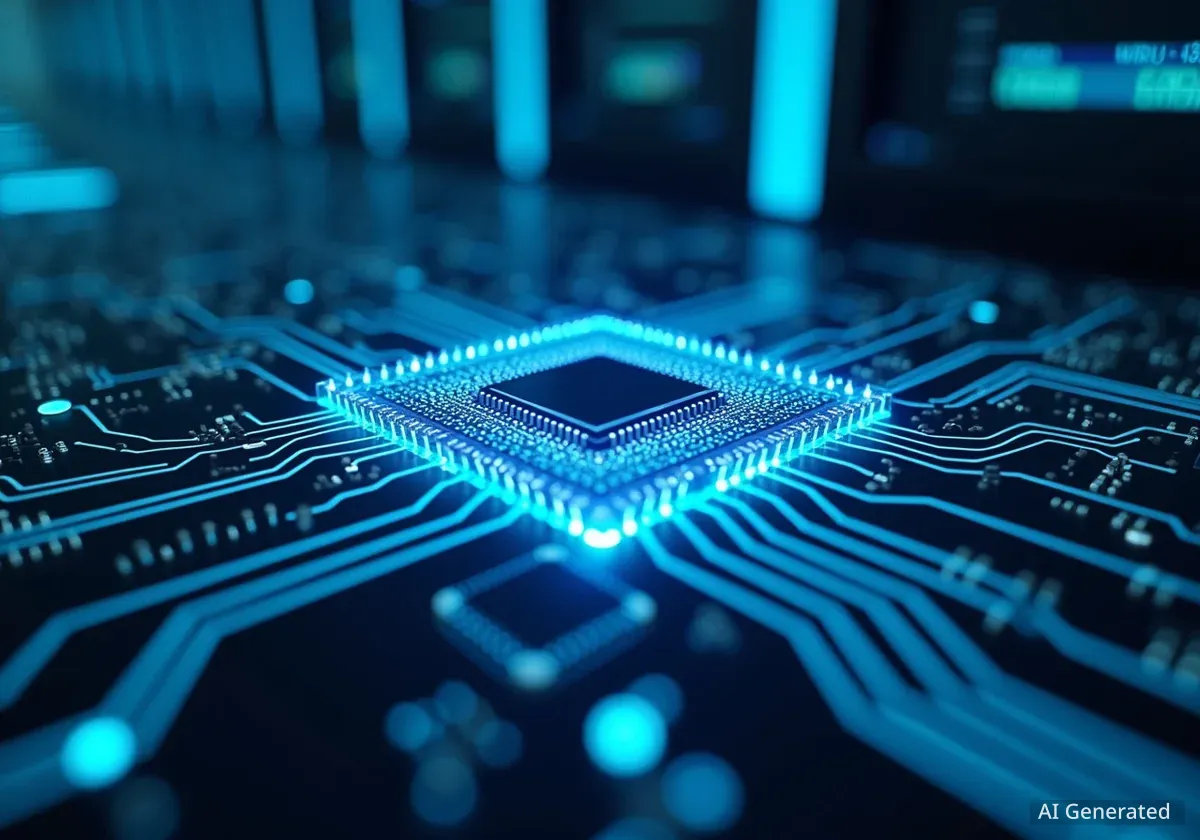Nvidia has introduced NVQLink, a new interconnect designed to bridge quantum processors with the AI supercomputers essential for their effective operation. This development marks a significant step towards integrating quantum and classical computing systems, a hybrid approach many experts believe is crucial for the future of advanced computation.
Key Takeaways
- Nvidia's NVQLink connects quantum processors (QPUs) with AI supercomputers.
- This interconnect aims to enable fast, scaled error correction for quantum systems.
- NVQLink is built on an open architecture, supporting various quantum modalities.
- The technology is the result of collaboration with over a dozen quantum companies and national labs.
- Experts predict hybrid quantum-classical computing will become the norm for complex problem-solving.
Bridging the Quantum-Classical Divide
Jensen Huang, Nvidia's Chief Executive, unveiled NVQLink during his keynote address at the company's Global Technology Conference in Washington, D.C. He described the interconnect as a "Rosetta Stone" for connecting quantum and classical supercomputers. This analogy highlights its role in translating between two fundamentally different computational paradigms.
Quantum processors harness principles of quantum physics to tackle problems beyond the scope of today's classical machines. These problems range from scientific discovery to complex financial modeling. However, for quantum systems to deliver practical, meaningful results, they require integration with powerful classical computers. These classical systems perform calculations that quantum processors cannot handle efficiently and are vital for correcting errors that naturally occur in quantum computations.
Important Fact
The quantum computing industry largely agrees that a hybrid infrastructure, combining quantum processing units (QPUs) with AI chips like Nvidia GPUs, is necessary. AI is expected to play a critical role in performing full-scale error correction for quantum systems.
The Role of AI in Quantum Error Correction
Tim Costa, Nvidia’s general manager for industrial engineering and quantum, emphasized the necessity of AI in this hybrid model. He explained that AI will be essential for full-scale error correction, a complex process that ensures the reliability of quantum computations. Previous attempts to integrate quantum processors with AI supercomputers have faced limitations in speed and scale, hindering effective error correction.
Nvidia states that NVQLink is the first solution to provide the necessary speed and scale. This capability is vital for unlocking the full potential of large-scale quantum computing. Without robust error correction, the inherent fragility of quantum states makes sustained, complex calculations extremely challenging.
"Every supercomputer will draw on quantum processors to expand the problems that it can compute, and every quantum processor will rely on a supercomputer to run correctly," said Tim Costa.
Open Architecture and Widespread Collaboration
The development of NVQLink involved extensive collaboration. Nvidia worked with more than a dozen quantum companies. These included industry leaders such as IonQ, Quantinuum, and Infleqtion. Additionally, a number of prominent national laboratories, including Sandia National Laboratories, Oak Ridge National Laboratory, and Fermi Laboratory, contributed to the effort.
A key feature of NVQLink is its open architecture. This design allows it to function across diverse quantum modalities, including trapped ion, superconducting, and photonic systems. This openness is crucial for broader adoption and innovation. It means national labs can now develop supercomputers specifically designed to leverage quantum capabilities as they become more readily available.
Industry Context
Quantum computing is still in its early stages of commercial viability. While the theoretical advantages are immense, practical applications require overcoming significant technical hurdles, particularly in maintaining quantum coherence and correcting errors. Interconnects like NVQLink aim to accelerate this journey by creating a more functional ecosystem.
Future Outlook for Quantum Value
Predicting the exact timeline for meaningful commercial value from quantum computing remains challenging. Nvidia's Tim Costa acknowledged that any specific timeframe would likely be speculative. He noted that while technological progress over the last two decades has been tremendous, the field is ripe for unexpected innovations.
Some quantum companies estimate that significant commercial impact could emerge within the next two to four years. This optimism stems from rapid advancements in quantum hardware and software, coupled with increasing investment and research. The integration facilitated by NVQLink could play a crucial role in accelerating this timeline by making quantum systems more practical and reliable for real-world applications.
The vision is clear: a future where every supercomputer can tap into quantum processors to solve previously intractable problems, and every quantum processor relies on a supercomputer to function correctly. This symbiotic relationship is central to the long-term success of quantum computing.
- Quantum processors offer unprecedented computational power.
- Classical computers provide essential error correction and complementary calculations.
- Hybrid systems represent the most viable path to widespread quantum adoption.
Impact on Scientific Research
The implications for scientific research are profound. Quantum computers, when effectively integrated, could revolutionize drug discovery, material science, and climate modeling. The ability to simulate complex molecular interactions or optimize logistical networks at an unprecedented scale could lead to breakthroughs in numerous fields.
Researchers are eager to leverage these hybrid systems to push the boundaries of what is computationally possible. The speed and scale offered by NVQLink could significantly reduce the time needed for complex simulations, accelerating the pace of scientific discovery globally.





